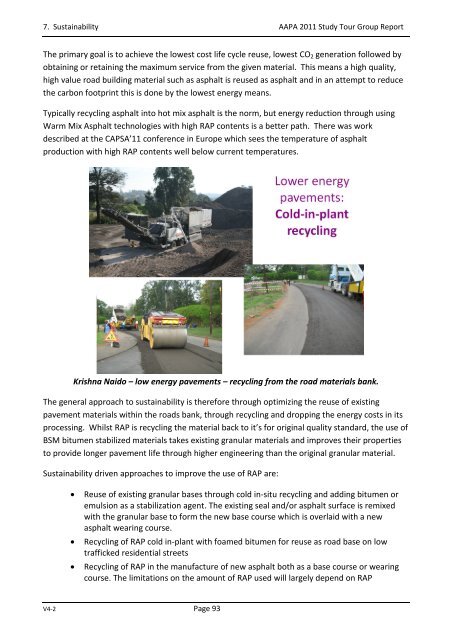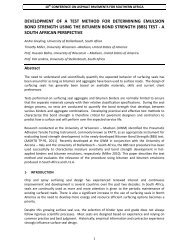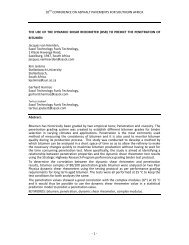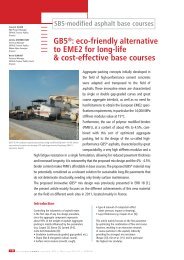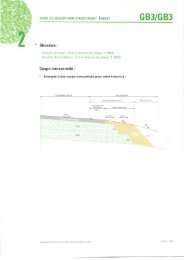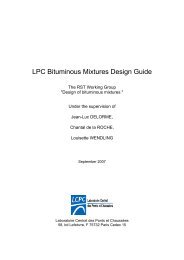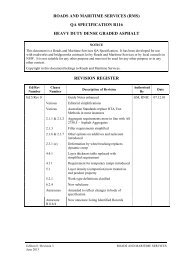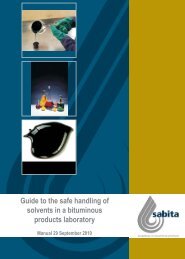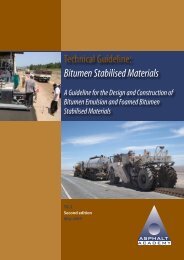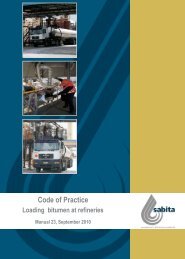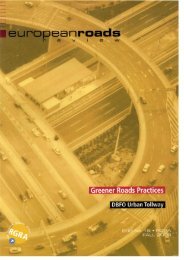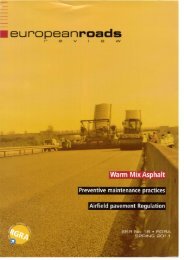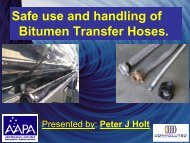Create successful ePaper yourself
Turn your PDF publications into a flip-book with our unique Google optimized e-Paper software.
7. Sustainability <strong>AAPA</strong> <strong>2011</strong> <strong>Study</strong> <strong>Tour</strong> Group ReportThe primary goal is to achieve the lowest cost life cycle reuse, lowest CO 2 generation followed byobtaining or retaining the maximum service from the given material. This means a high quality,high value road building material such as asphalt is reused as asphalt and in an attempt to reducethe carbon footprint this is done by the lowest energy means.Typically recycling asphalt into hot mix asphalt is the norm, but energy reduction through usingWarm Mix Asphalt technologies with high RAP contents is a better path. There was workdescribed at the CAPSA’11 conference in Europe which sees the temperature of asphaltproduction with high RAP contents well below current temperatures.Krishna Naido – low energy pavements – recycling from the road materials bank.The general approach to sustainability is therefore through optimizing the reuse of existingpavement materials within the roads bank, through recycling and dropping the energy costs in itsprocessing. Whilst RAP is recycling the material back to it’s for original quality standard, the use ofBSM bitumen stabilized materials takes existing granular materials and improves their propertiesto provide longer pavement life through higher engineering than the original granular material.Sustainability driven approaches to improve the use of RAP are:• Reuse of existing granular bases through cold in-situ recycling and adding bitumen oremulsion as a stabilization agent. The existing seal and/or asphalt surface is remixedwith the granular base to form the new base course which is overlaid with a newasphalt wearing course.• Recycling of RAP cold in-plant with foamed bitumen for reuse as road base on lowtrafficked residential streets• Recycling of RAP in the manufacture of new asphalt both as a base course or wearingcourse. The limitations on the amount of RAP used will largely depend on RAPV4-2 Page 93


